Evaluation of PIRs Post-Fire Pull-Out Strength in Concrete Exposed to ISO 834-1 Fire
Abstract
:1. Introduction
2. Materials and Experimental Procedure
2.1. Description of Tested Materials
2.2. Description of the Test Set-Up
3. Experimental Results
4. 3D Transient Thermal Analysis Using Ansys
4.1. Description of the 3D Transient Thermal Analysis
4.2. Validation of the Model
5. Conclusions
Author Contributions
Funding
Institutional Review Board Statement
Informed Consent Statement
Data Availability Statement
Acknowledgments
Conflicts of Interest
References
- Van Gemert, D. Force transfer in epoxy bonded steel/concrete joints. Int. J. Adhes. Adhes. 1980, 1, 67–72. [Google Scholar] [CrossRef]
- Needham, D.; Juntunen, D.A. Design Procedures for Concrete Anchors; Michigan Department of Transportation: Lansing, MI, USA, 1998.
- Çolak, A. Estimation of ultimate tension load of methylmethacrylate bonded steel rods into concrete. Int. J. Adhes. Adhes. 2007, 27, 653–660. [Google Scholar] [CrossRef]
- Çolak, A. Parametric study of factors affecting the pull-out strength of steel rods bonded into precast concrete panels. Int. J. Adhes. Adhes. 2001, 21, 487–493. [Google Scholar] [CrossRef]
- Bingöl, A.F.; Gül, R. Residual bond strength between steel bars and concrete after elevated temperatures. Fire Saf. J. 2009, 44, 854–859. [Google Scholar] [CrossRef]
- Lahouar, M.A. Mechanical behavior of adhesive anchors under high temperature exposure—Experimental investigation. Int. J. Adhes. Adhes. 2017, 78, 200–211. [Google Scholar] [CrossRef] [Green Version]
- Tavares CM, L.; Ribeiro MC, S.; Ferreira AJ, M.; Guedes, R.M. Creep behaviour of FRP-reinforced polymer concrete. Compos. Struct. 2002, 57, 47–51. [Google Scholar] [CrossRef]
- Elalaoui, O.; Ghorbel, E.; Mignot, V.; Ouezdou, M.B. Mechanical and physical properties of epoxy polymer concrete after exposure to temperatures up to 250 °C. Constr. Build. Mater. 2012, 27, 415–424. [Google Scholar] [CrossRef]
- Pinoteau, N.; Pimienta, P.; Guillet, T.; Rivillon, P.; Rémond, S. Effect of heating rate on bond failure of rebars into concrete using polymer adhesives to simulate exposure to fire. Int. J. Adhes. Adhes. 2011, 31, 851–861. [Google Scholar] [CrossRef]
- Al-Mansouri, O.; Mege, R.; Pinoteau, N.; Guillet, T.; Rémond, S. Influence of testing conditions on thermal distribution and resulting load-bearing capacity of bonded anchors under fire. Eng. Struct. 2019, 192, 190–204. [Google Scholar] [CrossRef]
- Al-Mansouri, O.; Mege, R.; Pinoteau, N.; Guillet, T.; Piccinin, R.; Mcbride, K.; Rémond, S. Numerical investigation of parameters influencing fire evaluation tests of chemically bonded anchors in uncracked concrete. Eng. Struct. 2020, 209, 110297. [Google Scholar] [CrossRef]
- Pinoteau, N.; Heck, J.V.; Rivillon, P.; Avenel, R.; Pimienta, P.; Guillet, T.; Rémond, S. Prediction of failure of a cantilever–wall connection using post-installed rebars under thermal loading. Eng. Struct. 2013, 56, 1607–1619. [Google Scholar] [CrossRef]
- Lahouar, M.A.; Pinoteau, N.; Caron, J.F.; Foret, G.; Rivillon, P. Fire design of post-installed bonded rebars: Full-scale validation test on a 2.94 × 2 × 0.15 m3 concrete slab subjected to ISO 834-1 fire. Eng. Struct. 2018, 174, 81–94. [Google Scholar] [CrossRef] [Green Version]
- Chehade, N.; Lahouar, M.A.; Al-Mansouri, O.; Pinoteau, N.; Piccinin, R.; Abate, M.; Rémond, S.; Hoxha, D. Bond Behavior of Post-Installed Rebars During Cooling Phase after High Temperature Exposure. In Proceedings of the Fib Symposium 2021, Lisbon, Portugal, 14–16 June 2021; p. 8. [Google Scholar]
- EOTA EAD 330087-00-0601. Systems for Post-Installed Rebar Connections wirh Mortar; EOTA: Ennepetal, Germany, 2018. [Google Scholar]
- EOTA TR 020. EOTA TR020. Evaluation of Anchorages in Concrete Concerning Resistance to Fire; European Organization for Technical Approvals Report no. 20; EOTA: Ennepetal, Germany, 2004. [Google Scholar]
- Al-Mansouri, O. Behavior of Bonded Anchors in Concrete under Fire. Ph.D. Thesis, Ecole Nationale Supérieure Mines-Télécom Lille Douai, Douai, France, 2020. [Google Scholar]
- EN 1992-1-2. Eurocode 2: Design of Concrete Structures—Part 1–2: General Rules—Structural Fire Design; CEN (European Comitte for Standarization): Brussels, Belgium, 2008. [Google Scholar]
- NF EN 1991-1-2: Eurocode 1: Actions Sur Les Structures—Partie 1–2: Actions Générales—Actions Sur Les Structures Exposées au Feu; CEN (European Comitte for Standarization): Brussels, Belgium, 2003.
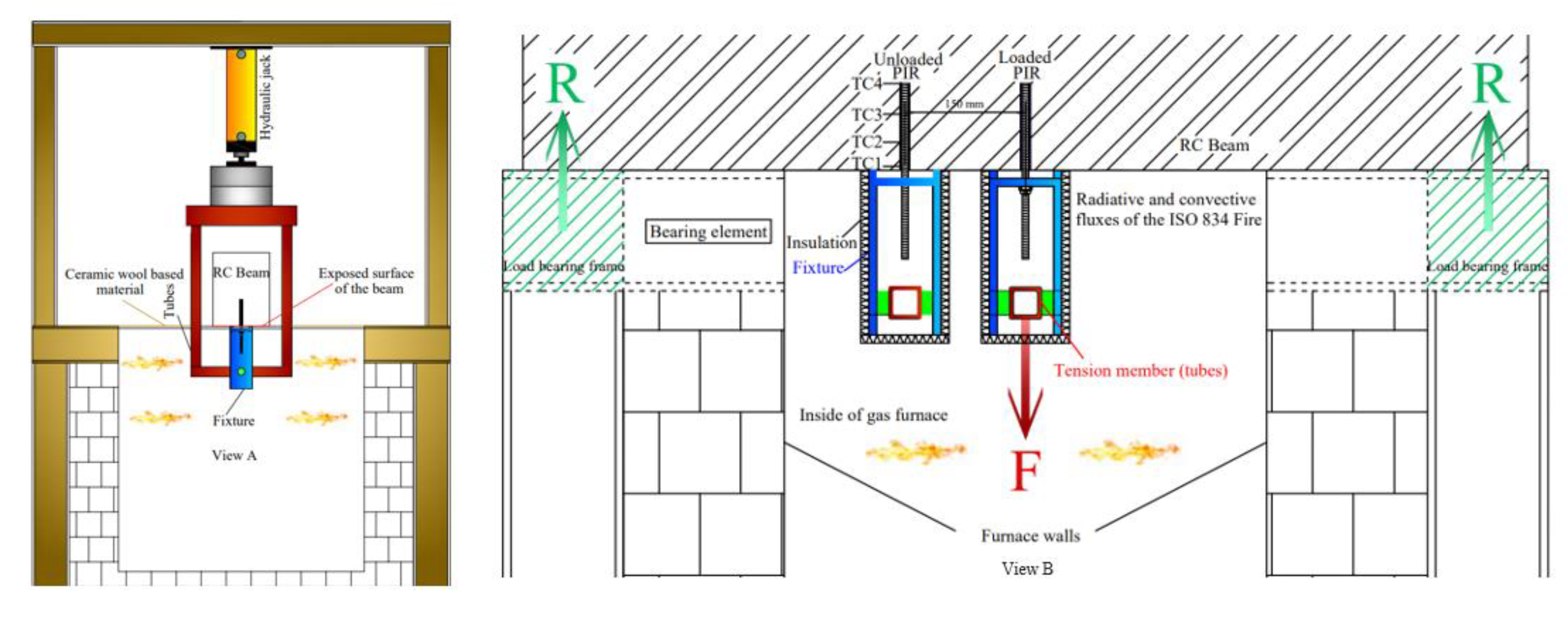

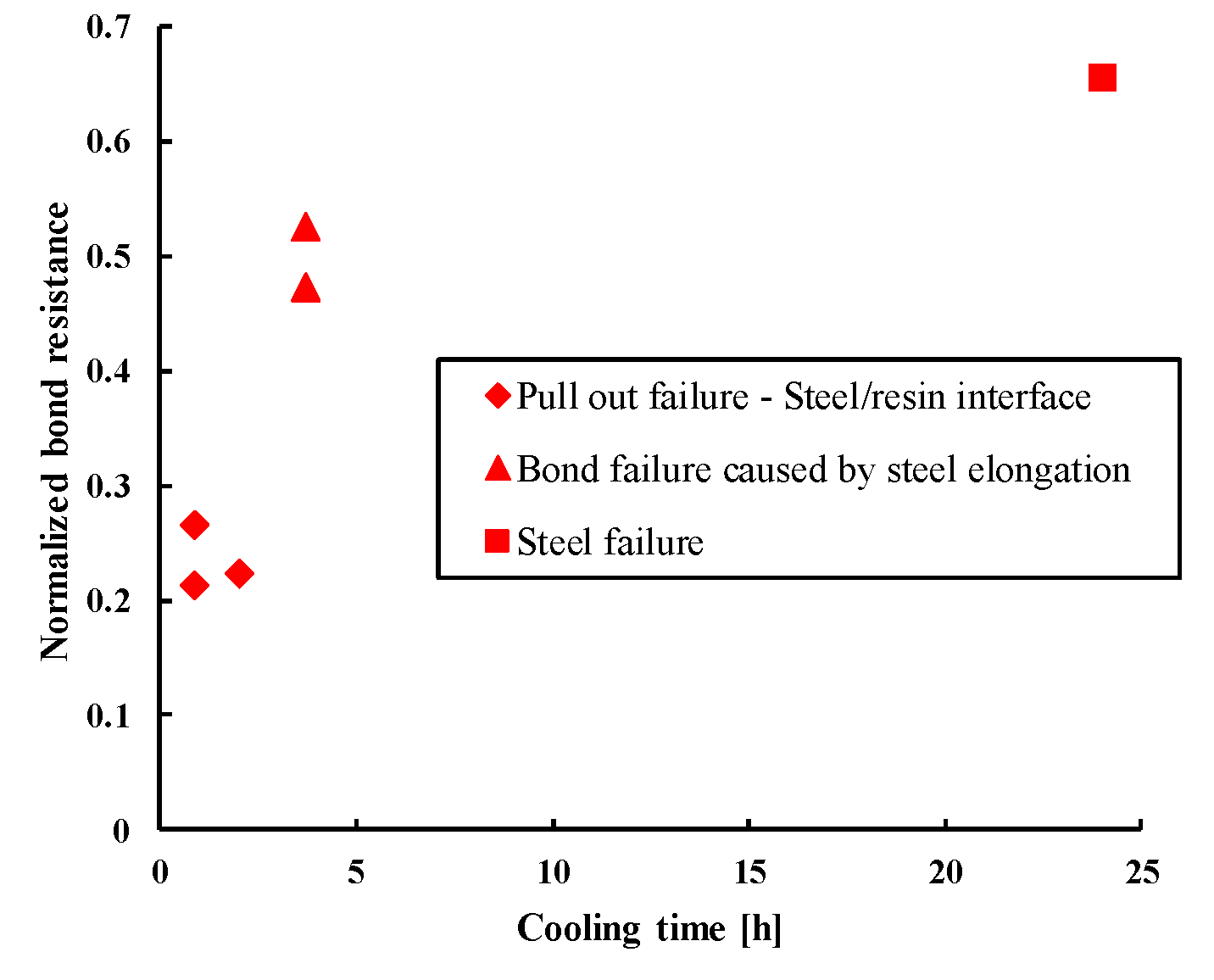
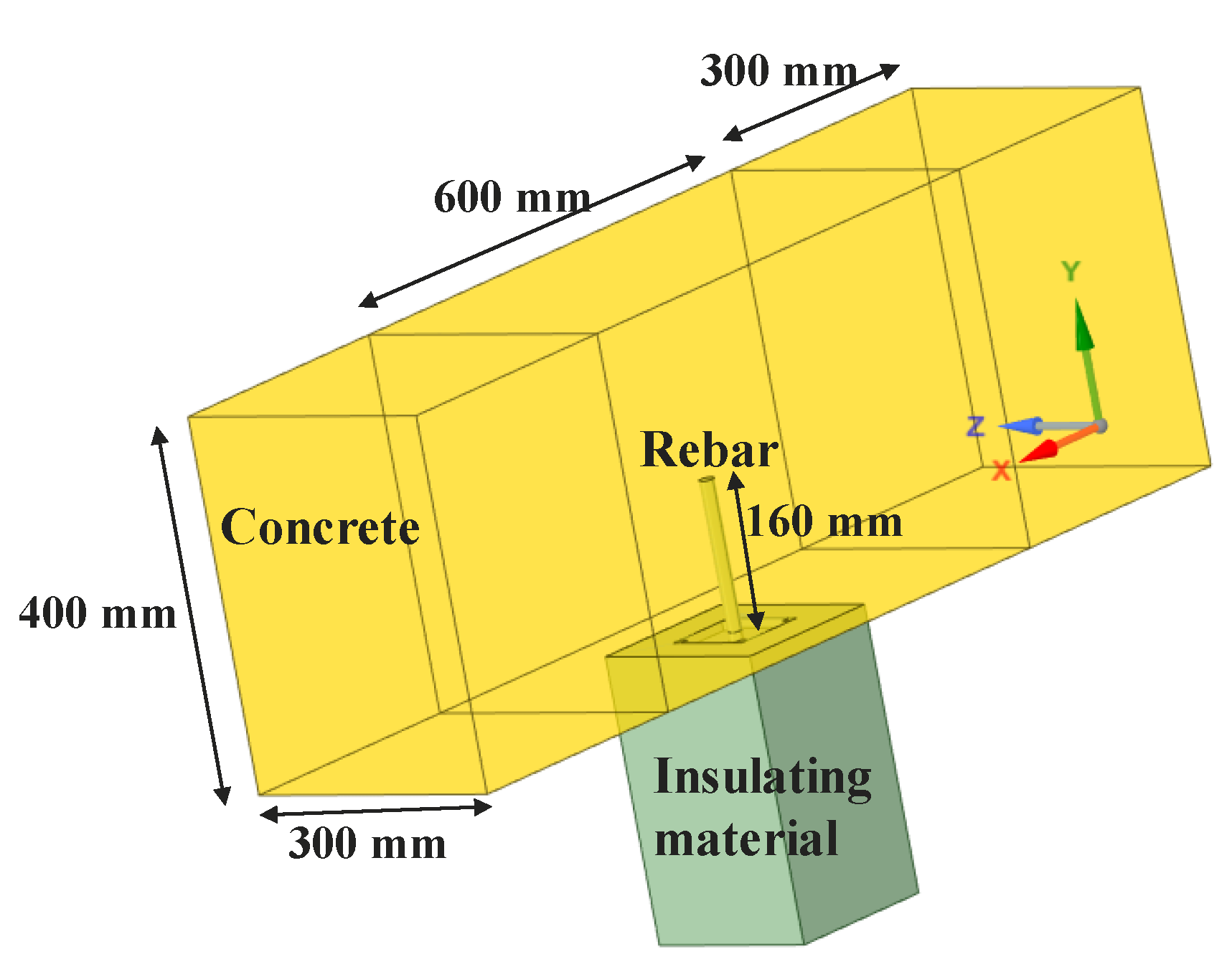


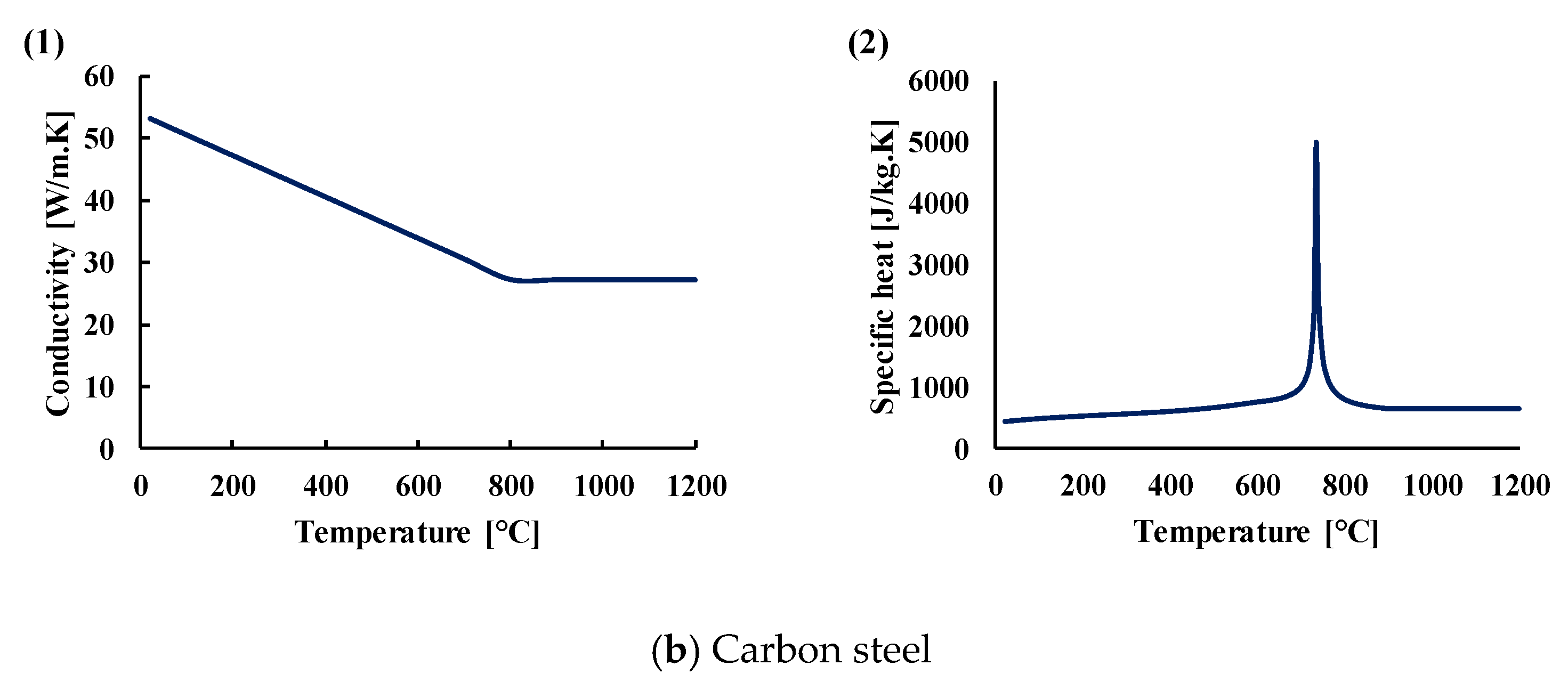


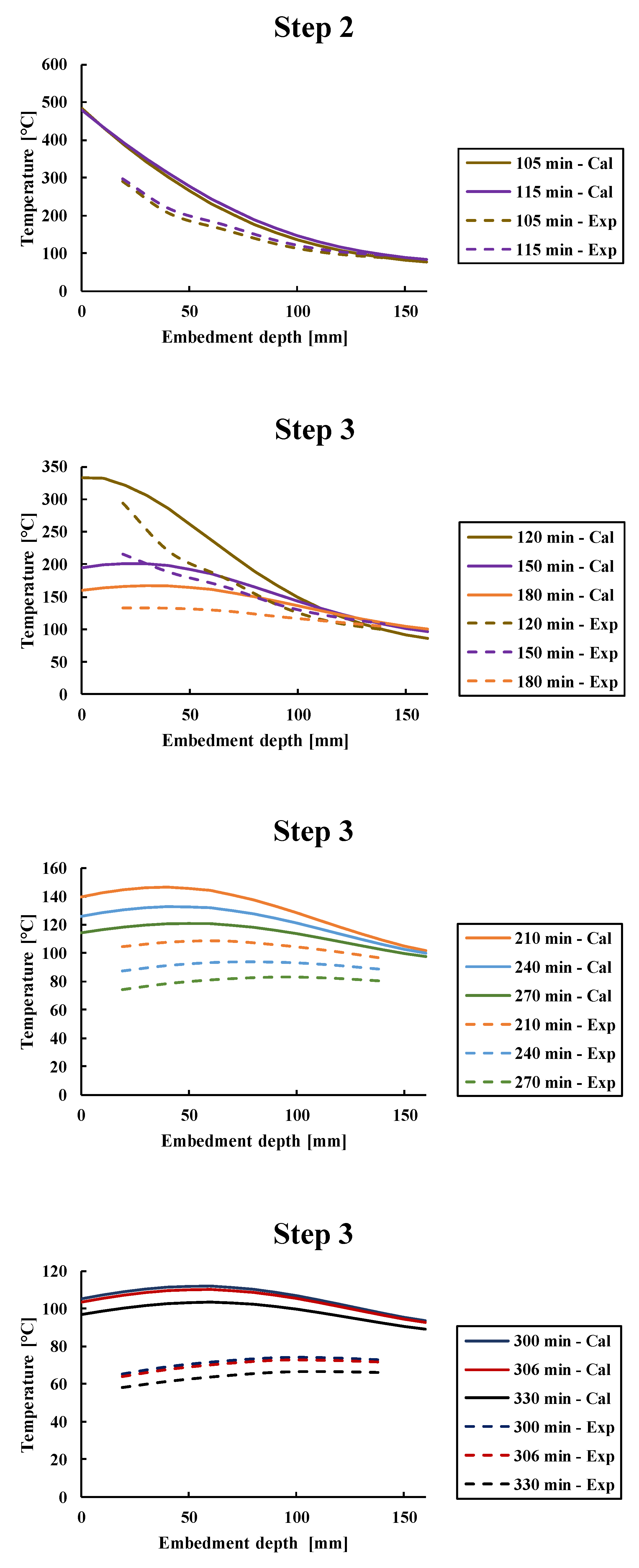
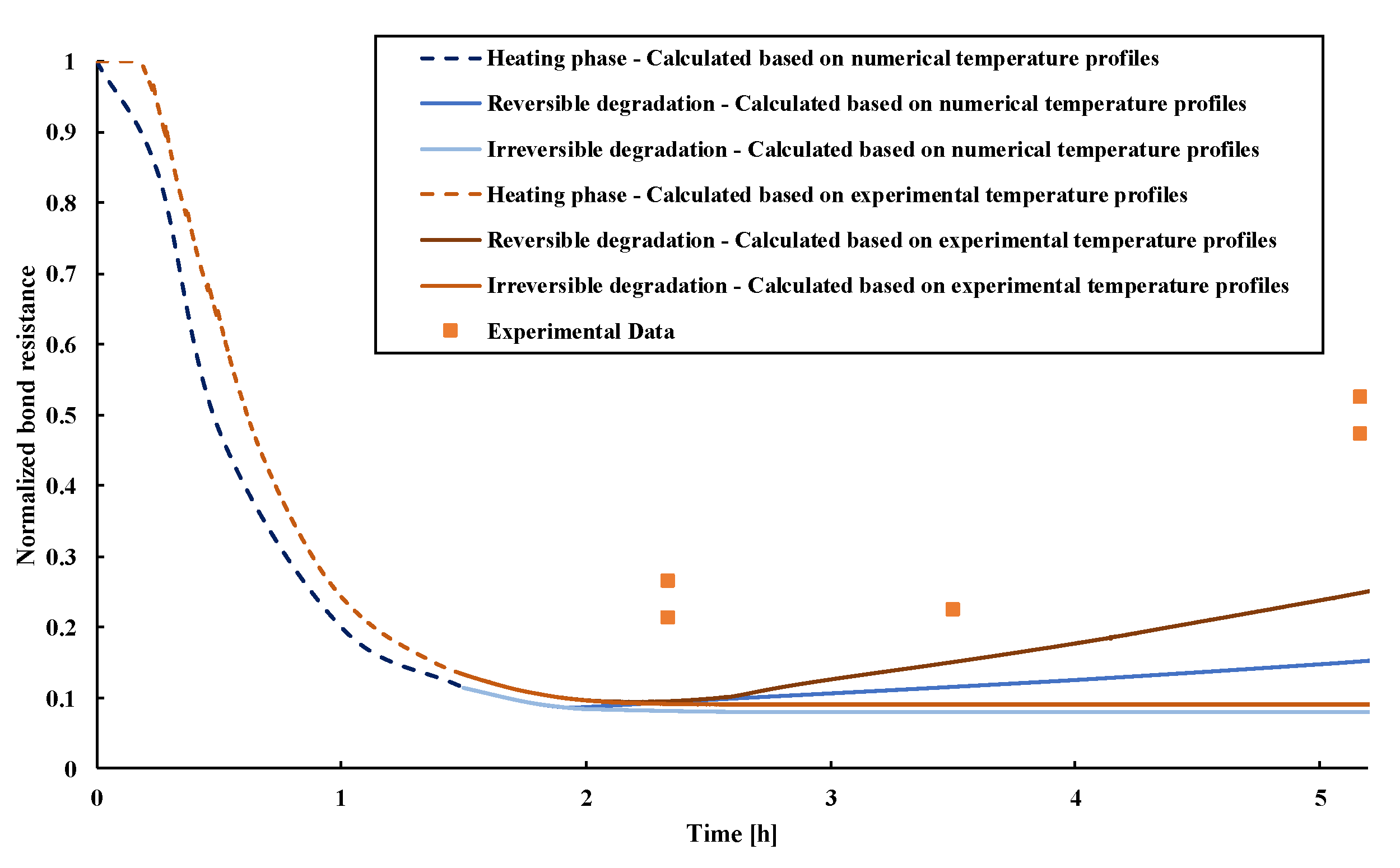
| Designation | Mineralogical Nature | Quantities (kg/m3) |
|---|---|---|
| G 0/6.3 Sand | Silico-Limestone | 880 |
| G 4/14 Gravel | Silico-Calcareous | 792 |
| G 4/22.5 Gravel | Silico-Calcareous | 88 |
| CEM II/B-LL 32.5R CE CP2 NF | - | 320 |
| Water | - | 227 |
| Specimen | Cooling Time after Exposure to Fire Conditions |
|---|---|
| B1 | 50 min |
| B2 | 50 min |
| B3 | 2 h |
| B4 | 3 h 40 min |
| B5 | 3 h 40 min |
| B6 | 24 h |
| Convective Heat Transfer Coefficient | Emissivity of Concrete and Steel | |
|---|---|---|
| Fire exposed surface | 0.7 | |
| Unexposed surface | 0.7 |
Publisher’s Note: MDPI stays neutral with regard to jurisdictional claims in published maps and institutional affiliations. |
© 2021 by the authors. Licensee MDPI, Basel, Switzerland. This article is an open access article distributed under the terms and conditions of the Creative Commons Attribution (CC BY) license (https://creativecommons.org/licenses/by/4.0/).
Share and Cite
Abdelrahman Alhajj Chehade, N.; Lahouar, A.; Al-Mansouri, O.; Pinoteau, N.; Abate, M.; Remond, S.; Hoxha, D. Evaluation of PIRs Post-Fire Pull-Out Strength in Concrete Exposed to ISO 834-1 Fire. Materials 2021, 14, 4998. https://doi.org/10.3390/ma14174998
Abdelrahman Alhajj Chehade N, Lahouar A, Al-Mansouri O, Pinoteau N, Abate M, Remond S, Hoxha D. Evaluation of PIRs Post-Fire Pull-Out Strength in Concrete Exposed to ISO 834-1 Fire. Materials. 2021; 14(17):4998. https://doi.org/10.3390/ma14174998
Chicago/Turabian StyleAbdelrahman Alhajj Chehade, Nagham, Amine Lahouar, Omar Al-Mansouri, Nicolas Pinoteau, Marco Abate, Sébastien Remond, and Dashnor Hoxha. 2021. "Evaluation of PIRs Post-Fire Pull-Out Strength in Concrete Exposed to ISO 834-1 Fire" Materials 14, no. 17: 4998. https://doi.org/10.3390/ma14174998






